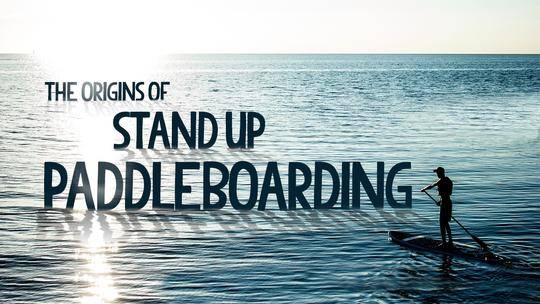SUP is a surfing tradition that has been around for years but only known widespread popularity in the last few decades. So what is SUP and where did it start? For those unfamiliar with surfing terminology, SUP is short for stand up paddle-boarding. Its roots come from Peru over 3000 years ago. In the city of Chan Chan, Peruvians rode the waves on vessels called “caballitos de totora” meaning “little horses made of reed” –notably unstable crafts composed of reeds often used for fishing. With a bamboo stick serving as a paddle, Peruvians surfed the waves standing up for sport as well as entertainment.
Throughout history, other iterations of stand up paddle boarding existed. Back in the 8th century AD in Tel Aviv, Israelis and Arabians used a board-boat hybrid called a Hasake to surf. Initially used for fishing, Hasake eventually became helpful in rescue missions due to its 5-foot width which can accommodate a struggling surfer.
In the 1400s, the gondola was used as stand up transportation throughout Italy. Gondoliers used an oar rather than a pole to guide the gondolas throughout the flowing waters. While not technically “surfing,” the form predates SUP and serves as an early example of paddling standing up.
Modern SUP can be traced back to the early 1900s with the famous surfer Duke Kahanamoku. Called “The King of Waikiki Beach,” Duke was a renowned swimmer, surfer, Olympic Gold Medalist, and one of Waikiki’s famous surfing instructors known as the Waikiki Beach Boys. Along with the Ah Choy brothers, Leroy and Bobby, the Waikiki Beach Boys oversaw tourists while standing on their boards with a paddle to steer. The Ah Choy boys extended the tradition and eventually the style of surfing officially came to be called “Beach Boy Surfing”.
Fascinated with the ocean and with the Waikiki’s boys’ style, John Zapotocky became a monumental figure in the movement. He was so beloved, he was named an honorary Beach Boy, even earning the nickname “Pearl Diver”. Up until his death at the age of 95 in 2013, John kept surfing the waves standing up, inspiring young and old with his passion for SUP.
Fast-forward to the late 1900s in Maui, and stand-up paddle-boarding starts to become a recognizable pastime thanks to contributions of Dave Kalama and Laird Hamilton, co-creators of the tow-in surfing model. In 1995, they experimented with canoe paddles for steering their boards and later designed some of the first downwind boards used in SUP today. By paddle boarding standing up, they made the sport more visible among tourists.
Meanwhile, in Oahu, other famous boarders such as Brian Keaulana and Archie Kalepa began improving SUP equipment performance. Keaulana, in particular, brought a whole new level of popularity to SUP when he included a “Beach Boy Surfing” category inthe “Buffalo Big Board Contest” of 2003, drawing in over 49 participants to test their skill.
The most significant step came in 2004 when Vietnam veteran Rick Thomas moved the sport to San Diego, California. Taking SUP from Hawaii to California brought SUP into the public eye. Once there, it spread like wildfire across the state, including places like Malibu and Dana Point, where a SUP racing contest called the Battle of the Paddle was held from 2008-2015. The sport has become so popular, it’s gone international. Every year, Germany holds a SUP World Cup while Japan and Australia hold their own competitions.
From its Peruvian origins to its modern-day Hawaiian equivalent, stand up paddle boarding demonstrates an evolution in engineering and purpose. Necessity became fun. Fun became competition. Competition became a tradition. And with these simple transitions, the sport of SUP became a household name. So get out there, grab a paddle, and stand up the next time you’re itching to get out on the water!











